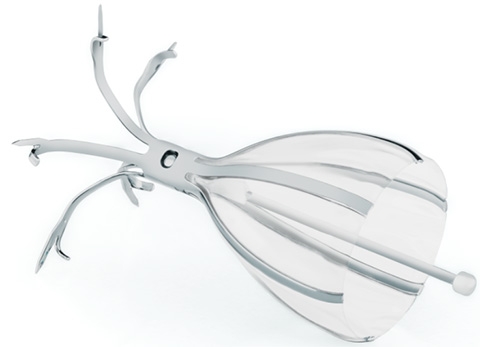Bronchoscopic Lung Volume Reduction is a non-surgical procedure to improve breathing in people who have emphysema. It is often called BLVR for short and also known as Endobronchial Valve Treatment.
Key Facts
- Bronchoscopic Lung Volume Reduction is used to treat people with emphysema
- BLVR is a non-surgical alternative to Lung Volume Reduction Surgery
- BLVR may be particularly helpful for people with Alpha-1 antitrypsin deficiency
Bronchoscopic Lung Volume Reduction (BLVR) is a minimally-invasive treatment option for people with severe emphysema, a form of chronic obstructive pulmonary disease (COPD).
The procedure involves placing a valve within the lungs
BLVR has been shown in clinical trials to reduce symptoms like shortness of breath, improve lung function, and improve overall quality of life in appropriate patients.
Who Is BLVR For?
BLVR is for people whose emphysema can no longer be relieved through medications, oxygen therapy, and pulmonary rehabilitation. People at this point may have trouble going about their daily activities and may even find it difficult to gather the energy to interact with family and friends.
Before BLVR was an option, the only alternative was surgery. Lung Volume Reduction Surgery (LVRS) is a procedure that surgically removes unhealthy pieces of lung. It is more invasive than BLVR, but it may be an appropriate choice for some patients depending on the exact nature of their condition.
How Does BLVR Work?
BLVR works by placing a small, one-way valve inside the airways of the diseased lung. The umbrella-shaped valve is called the Spiration Valve system. The Spiration Valve system is used to redirect breathed-in air towards the healthier parts of the lung and away from the areas most affected by emphysema. This results in easier breathing.

About the Procedure
The BLVR procedure involves the following steps:
- A doctor will gives medication to make the patient sleepy (sedation) or unconscious (anesthesia).
- Using a bronchoscope (a thin tube with a camera, inserted through the mouth or nose), the doctor will place the Spiration Valves in the airways.
- On average, four Spiration Valves are implanted per procedure
- An overnight hospital stay may be required for observation and to ensure the Spiration Valves are having the desired effect.
The BLVR procedure usually takes less than one hour but may take up to two hours.
The doctor who performs the procedure is typically a special type of pulmonologist (lung doctor) known as an interventional pulmonologist.
Risks & Benefits
Benefits
Spiration Valves reduce the volume of diseased parts of the lung, and redirect air to healthier parts. This may help improve overall lung function and quality of life for people living with emphysema.
In clinical studies of BLVR, many of the treated patients experienced the following benefits:
- Improved ability to breathe
- Reduction in air trapped in their lung
- Decreased shortness of breath
- Increased ability to perform daily activities
- Improved quality of life
Some patients reported immediate benefits from treatment, but it can sometimes take several months to achieve maximum effect.
Risks
Valve therapy is a minimally invasive procedure that is well tolerated by most patients, but is not without risks. Potential complications which may be associated with bronchoscopy and/or the Spiration Valve System may include, but are not limited to:
- Pneumothorax (collapsed lung)
- worsening of COPD symptoms
- Coughing up blood (hemoptysis)
- Pneumonia
- In rare cases, death
After the Procedure
After the procedure, regular follow-up visits with a doctor (pulmonologist) will be scheduled so that they can examine the effect of the valve therapy. The doctor may want to check the valves directly using a bronchoscope.
Many people feel much better right after the procedure, but recovery time will vary from person to person. It is important to work with the doctor to determine the right amount of rest and activity to avoid setbacks.
It is also important to keep in mind that valve therapy does not necessarily eliminate the need for continued medication or oxygen therapy for emphysema. People who have undergone BLVR should talk with their doctor before making any changes to their treatment routine.
Although you may feel better after receiving the Spiration Valves, always consult your doctor before you make any changes to using oxygen and COPD medications. Valve therapy is not a substitute for treatment of COPD by medication or oxygen therapy.
Next Steps
If you are continuing to experience severe emphysema symptoms despite medical management and pulmonary rehabilitation, it may be time to ask your doctor about the bronchoscopic lung volume reduction and the Spiration Valve System.
The Advanced Emphysema Program at Columbia features can help. Our team features leaders in the field who deliver outstanding results for their patients. Call (212) 305-5501 or request an appointment.
